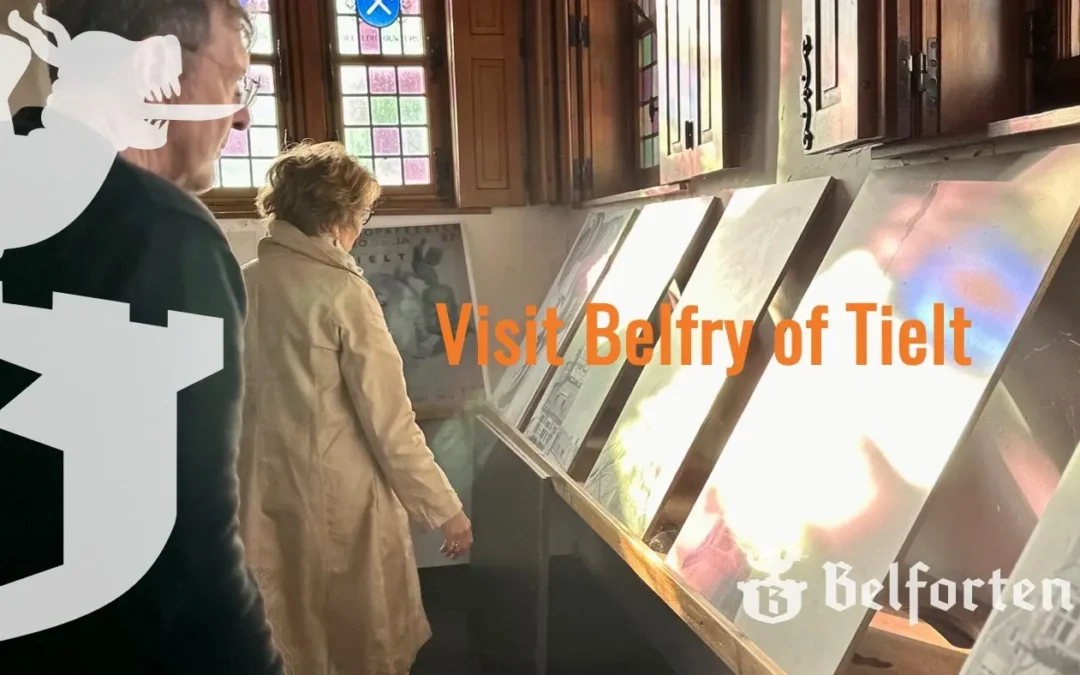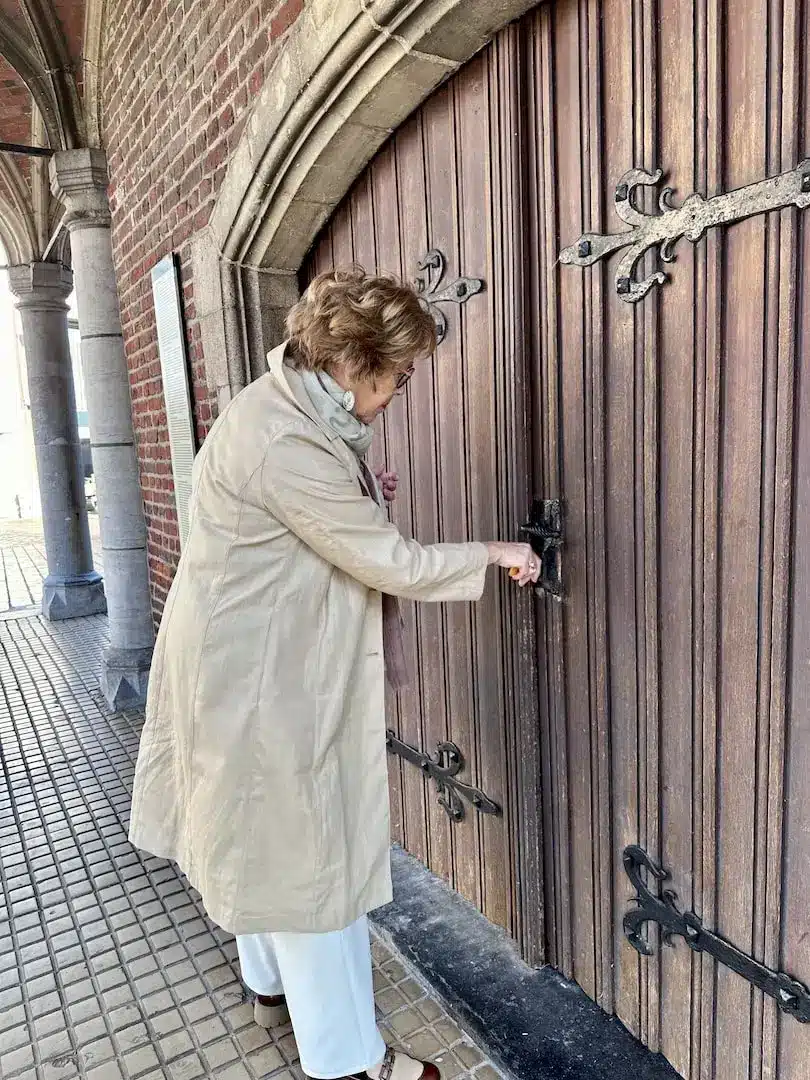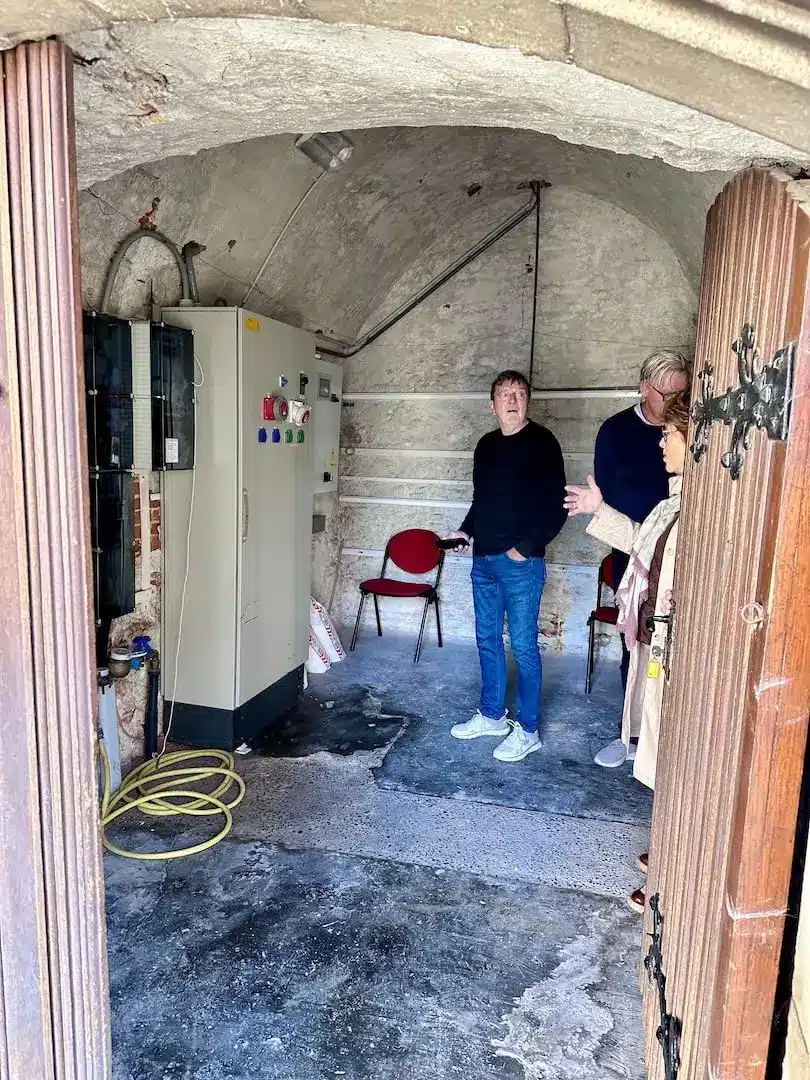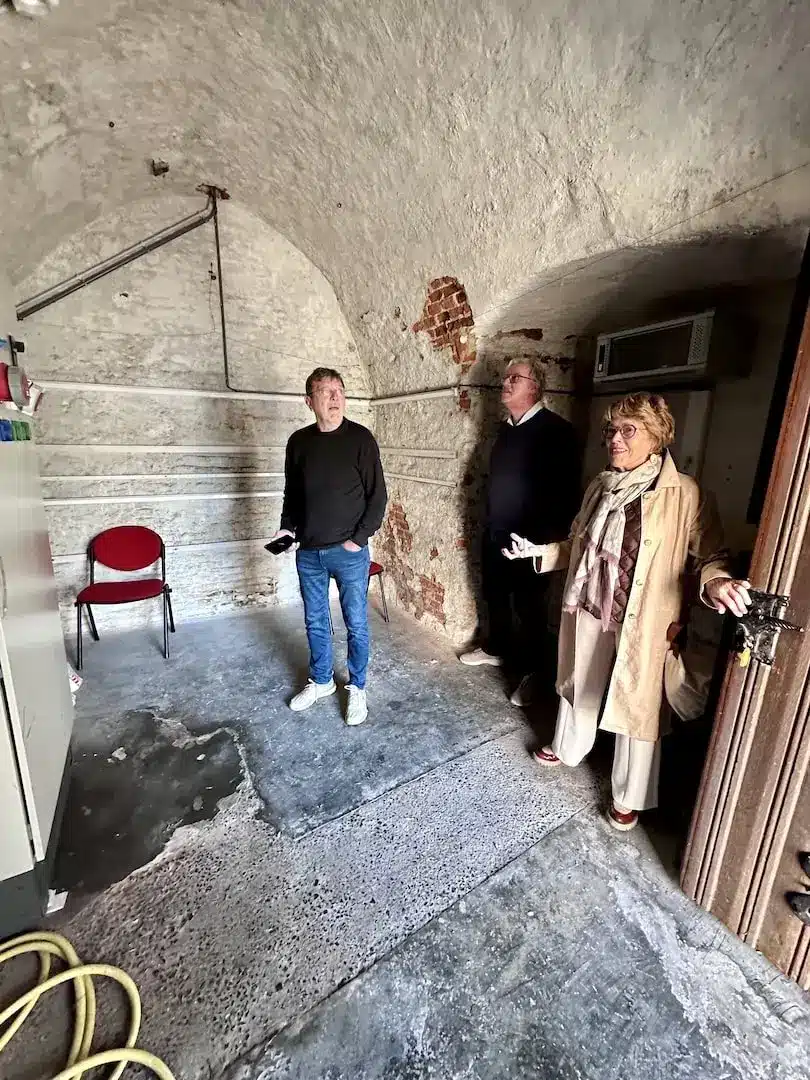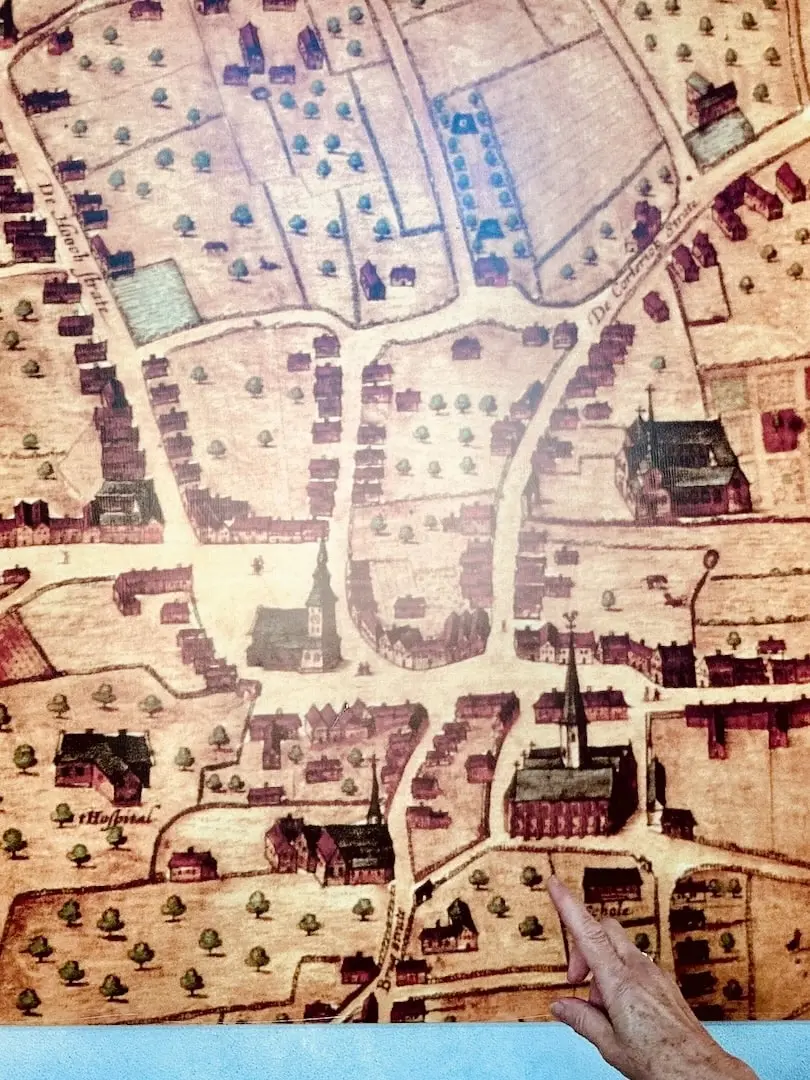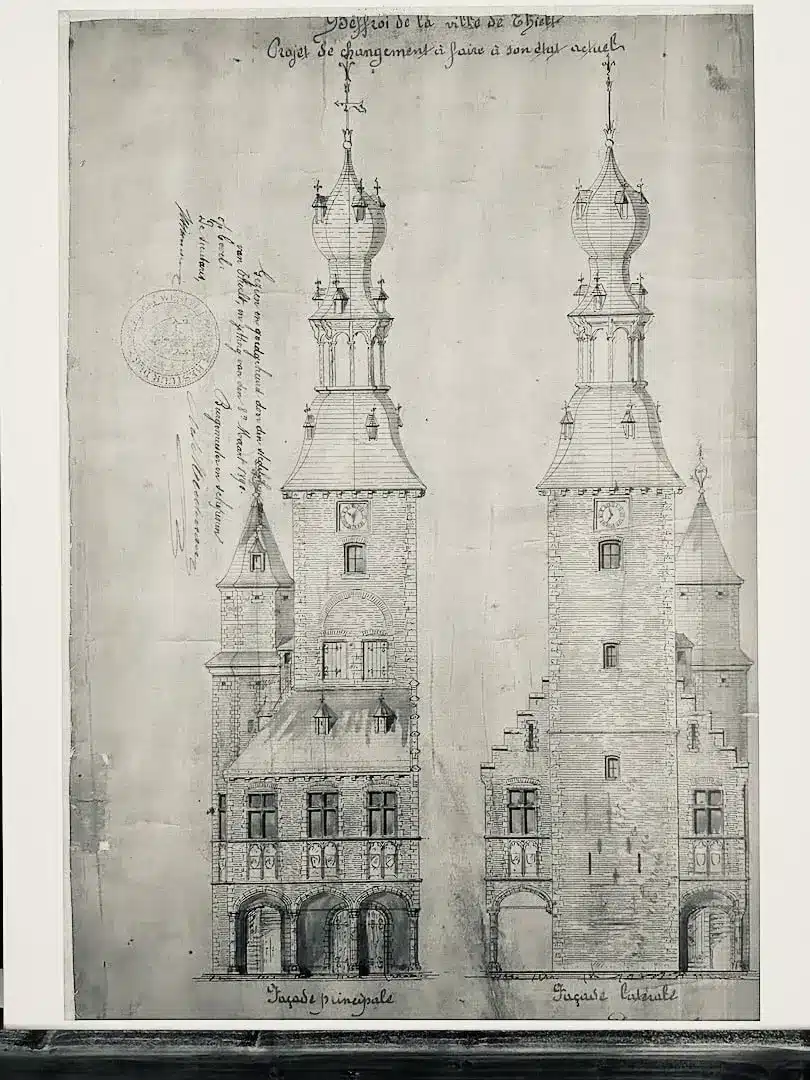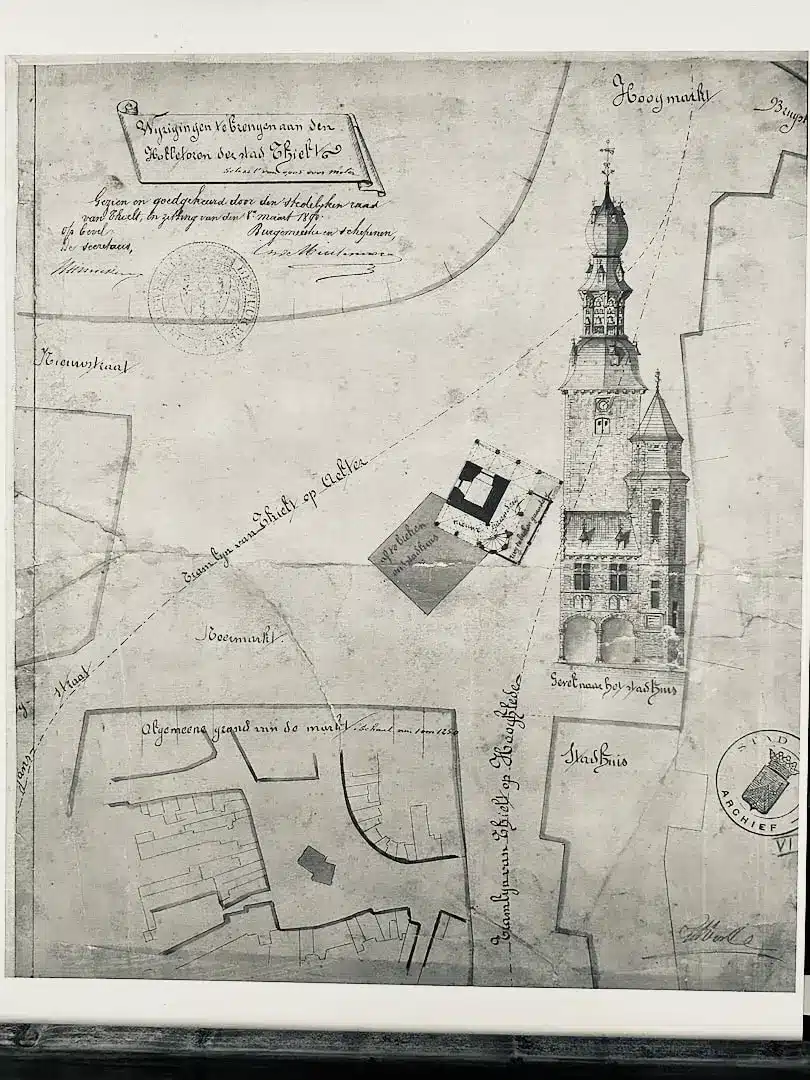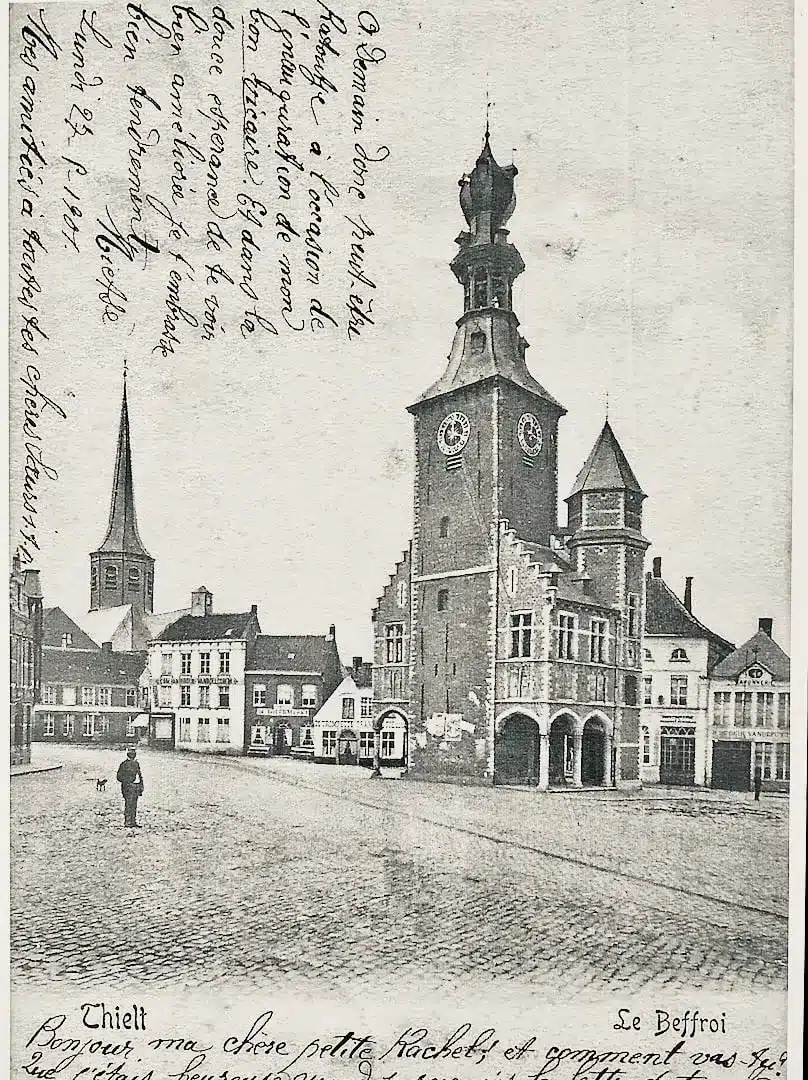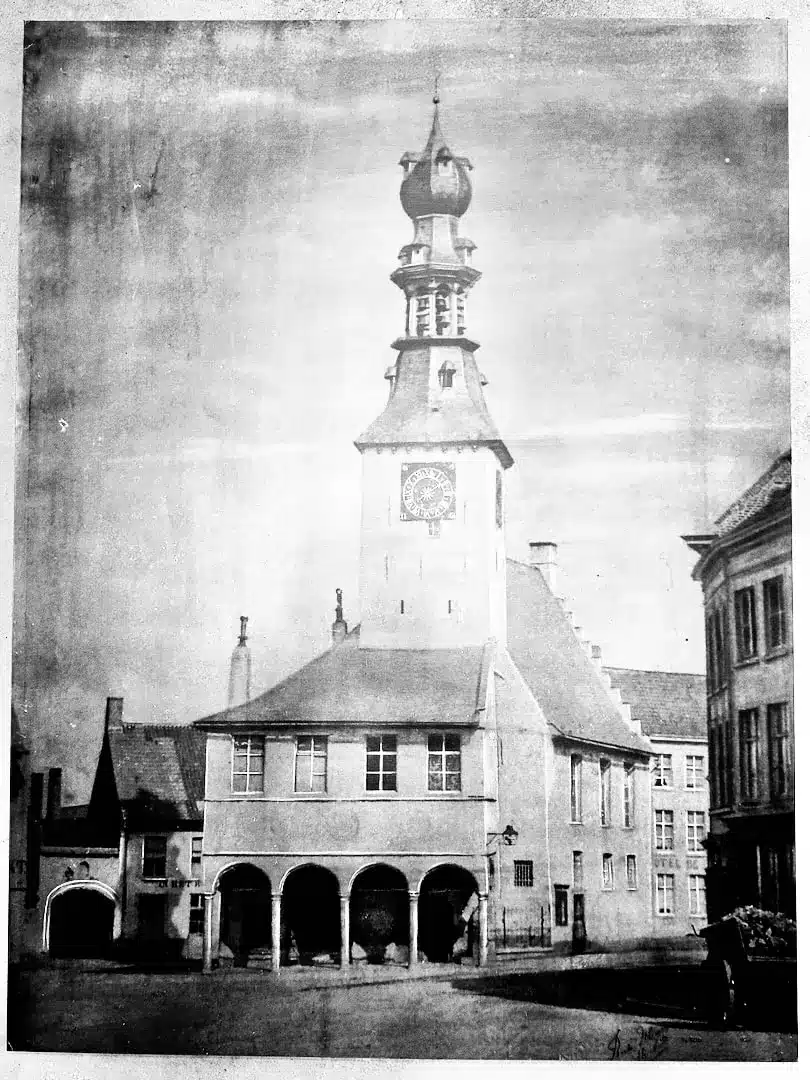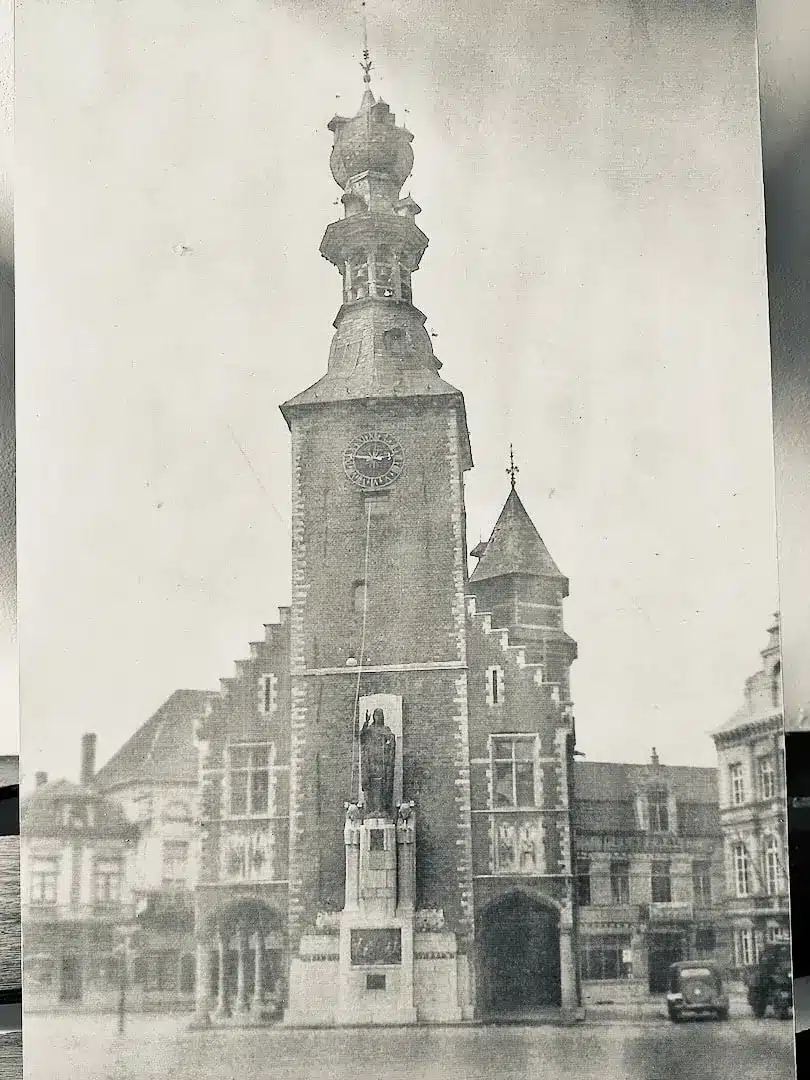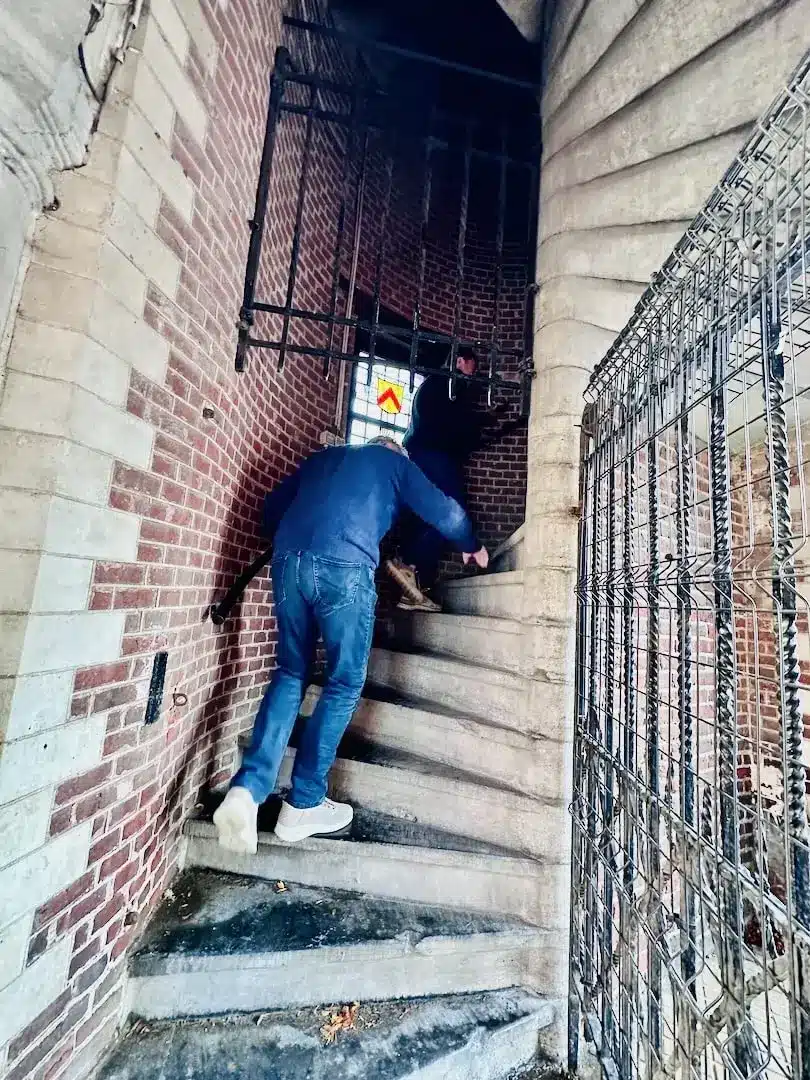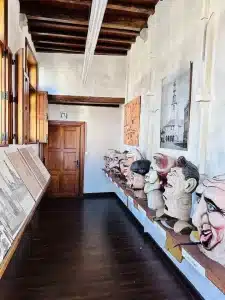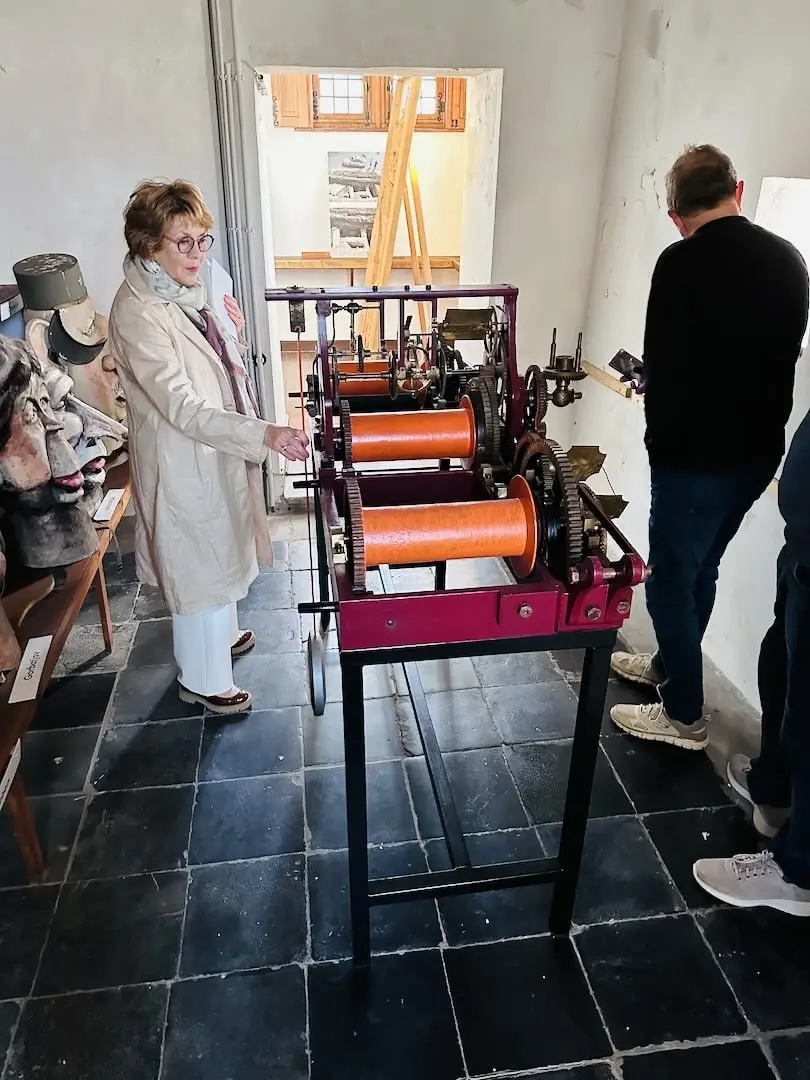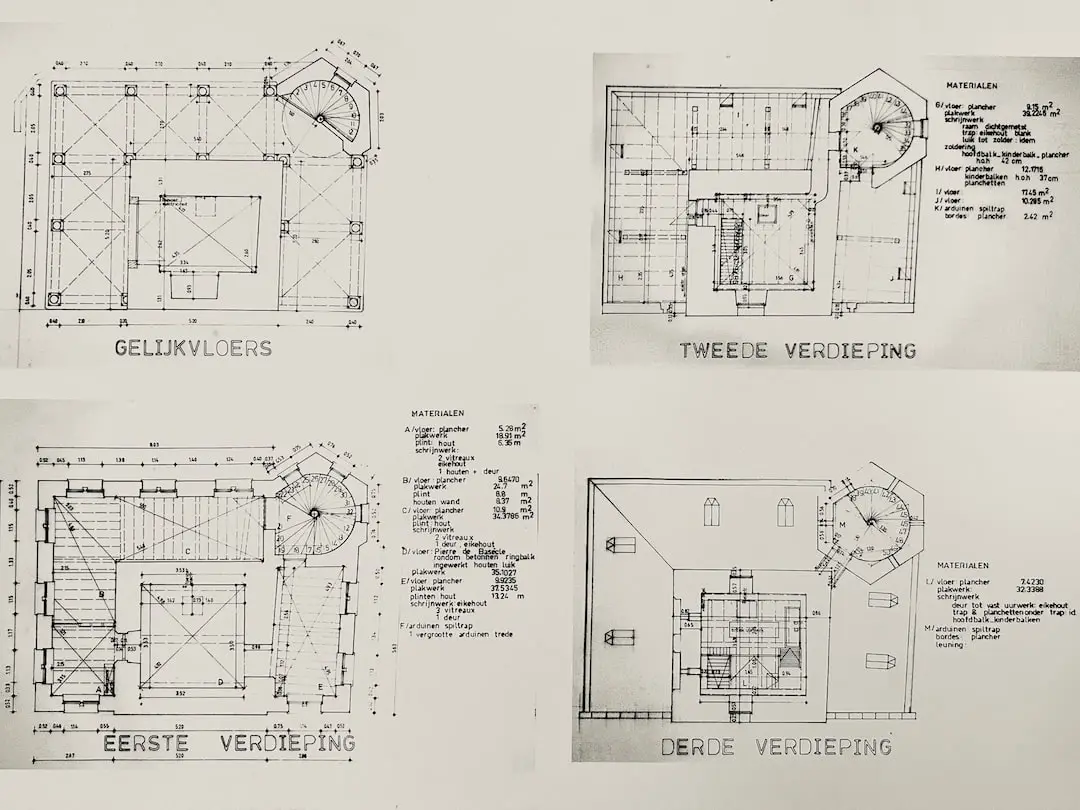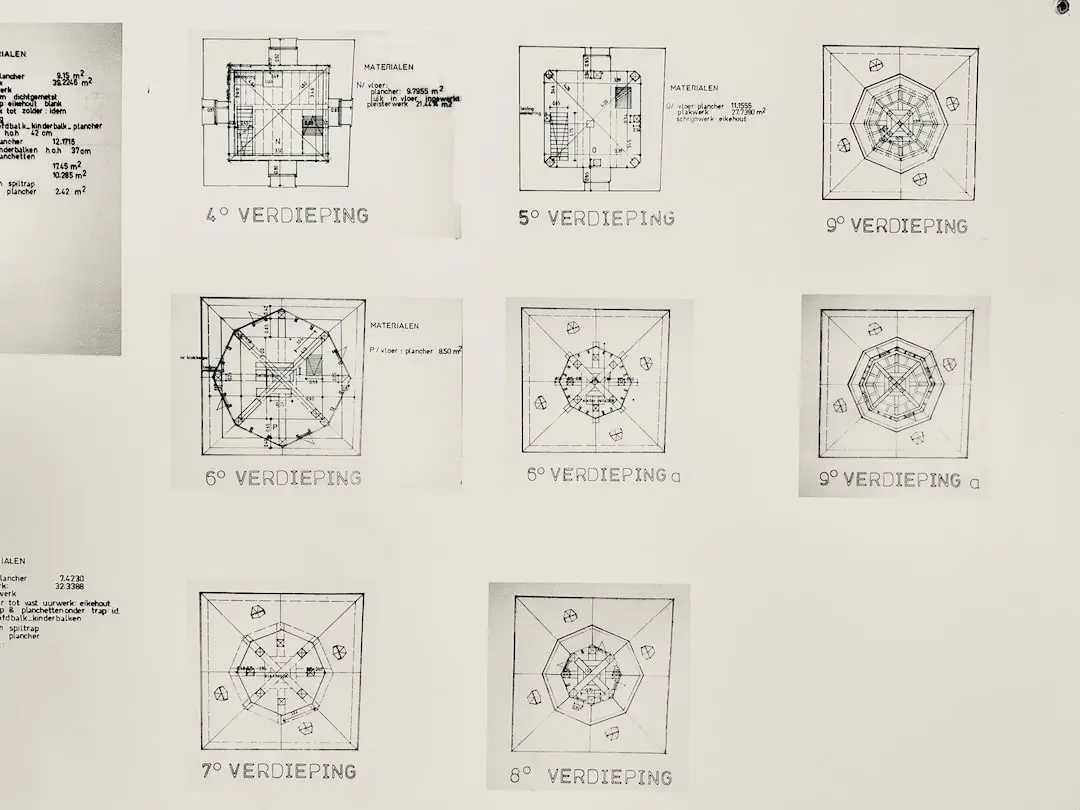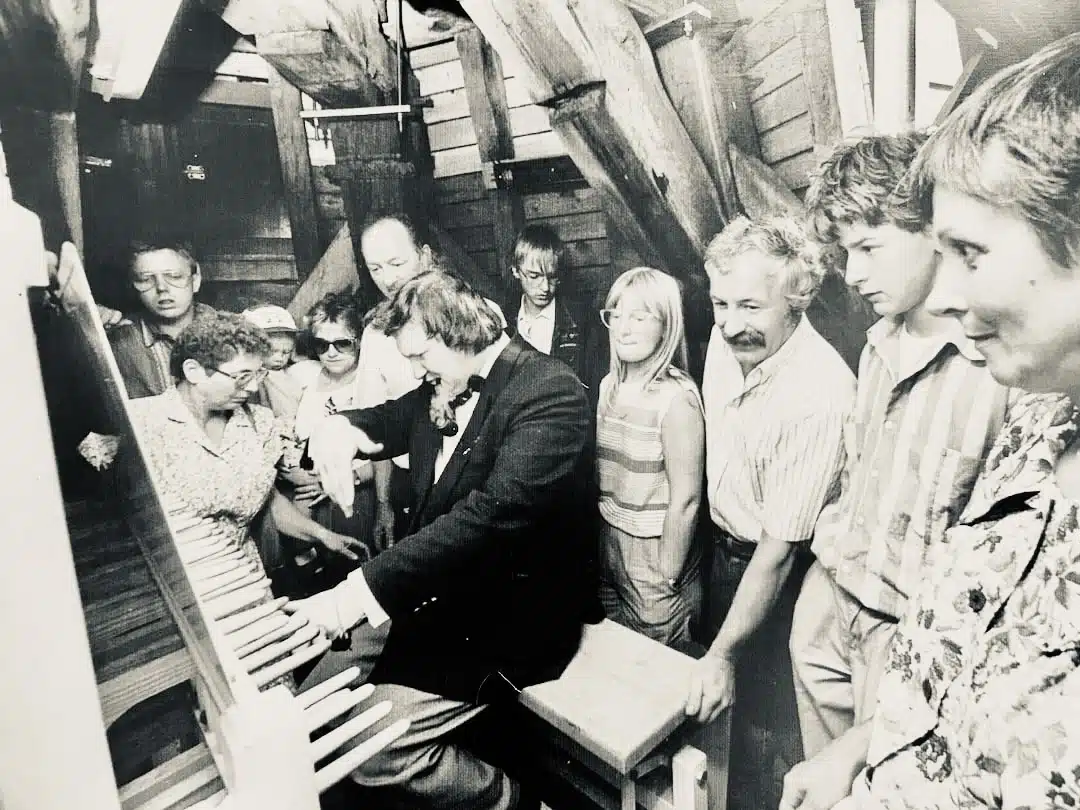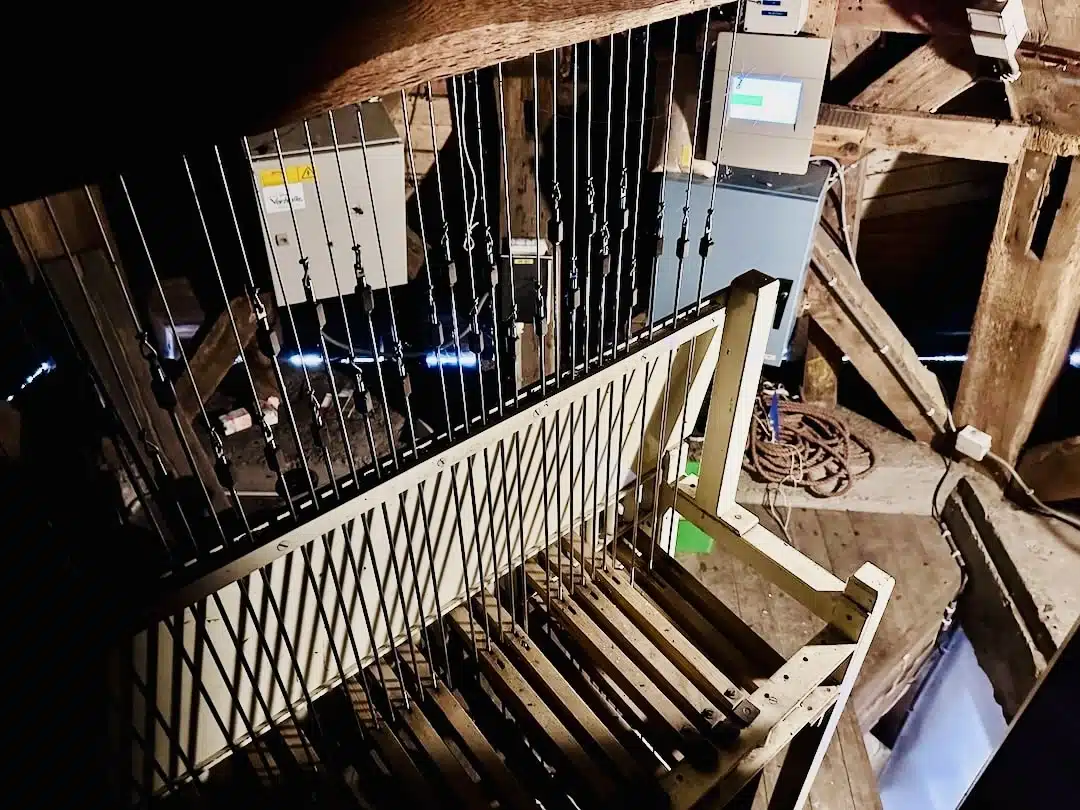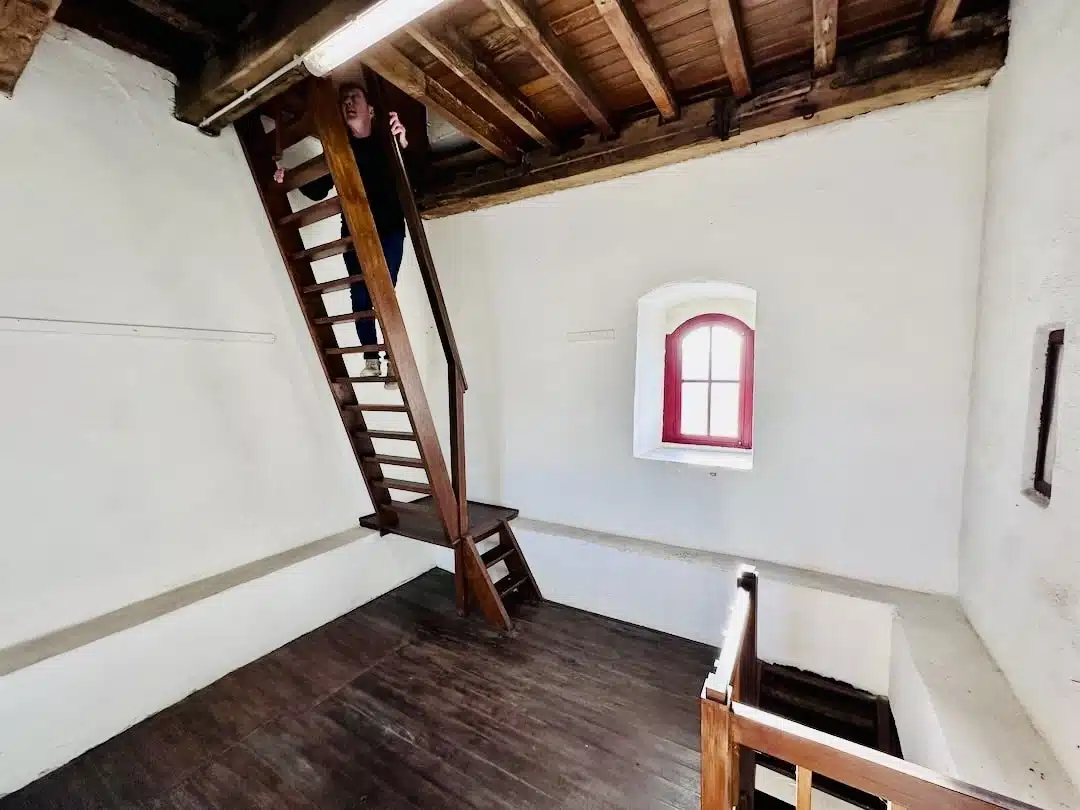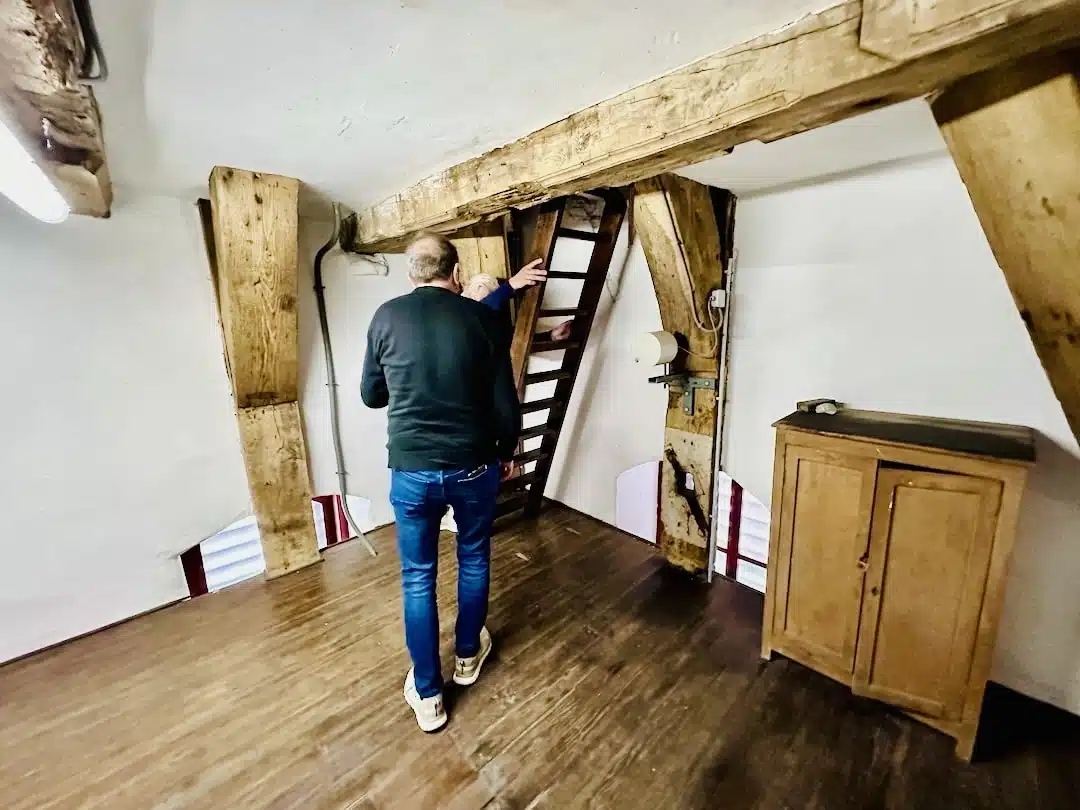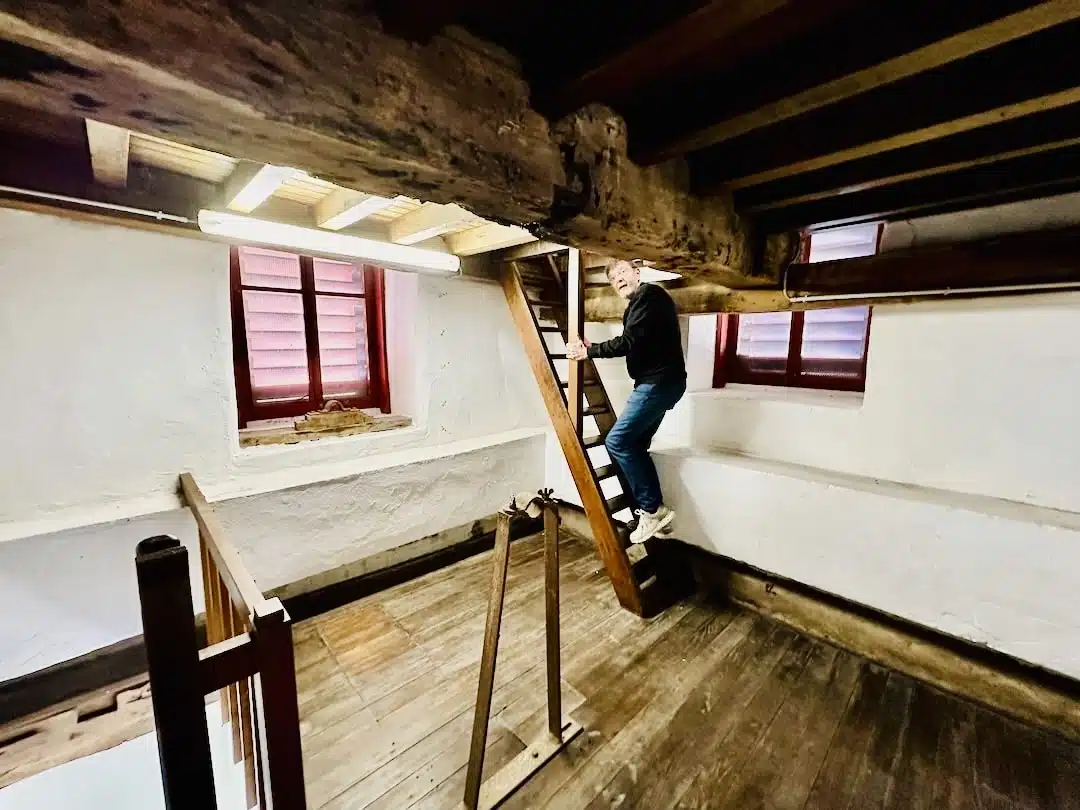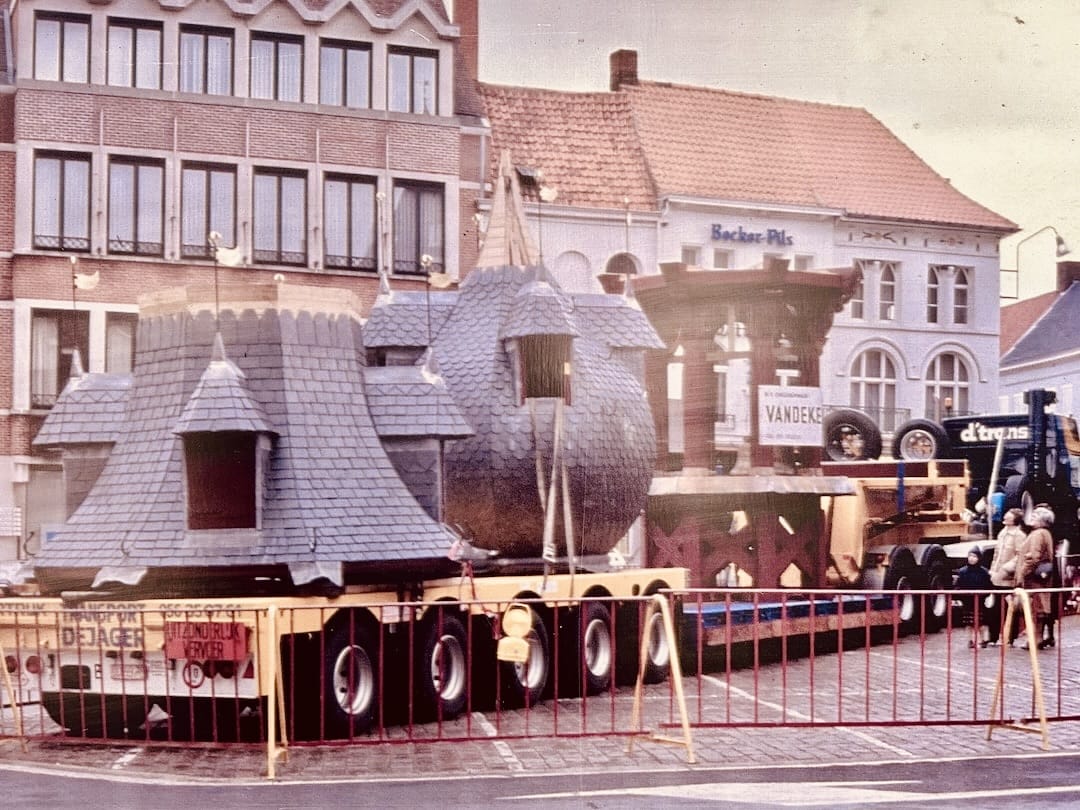Up in the belfry of Tielt!
On a sunny morning, chime of ten, we report to the belfry of Tielt. Here city guide Berenice Vanrenterghem is waiting for us. Via Visit Tielt ‘s website, we have booked a guided tour, which allows us to explore the belfry under supervision. After all, it is only accessible with a city guide, according to the website.
The first door to open gives access to a small service area on the first floor. This is the tower’s technical room, where the foundations are visible. Inside, it is immediately clear how thick the walls are: one and a half meters! These sturdy walls date back to 1275, the year in which construction of the belfry began.
A belfry thanks to Beatrice of Brabant
That Tielt received permission from Beatrice of Brabant to build a belfry in 1275 is significant. It indicates a flourishing period of trade and activity in the city. A belfry was not given lightly; it symbolized economic and strategic significance.
Tielt had a prominent position in West Flanders at that time. After Bruges, Ypres and Kortrijk, it was the fourth largest city in the province. If you look at a map, you can see why. Tielt lies exactly in the middle of a triangle formed by Bruges, Ghent and Kortrijk – a strategic location that gave the city its importance.
Once a year the doors are open
The walls of the belfry are made of bricks fired on site with ferrous clay from the region. This gives the bricks their typical reddish-brown color. Over the years, the walls have been repeatedly reinforced, especially after vandalism. As a result, the walls have become so thick that very little space remains inside. Today, this space is used for technical purposes, except once a year. Then they open the doors to put in an atmospheric nativity scene.
A separate entrance for the upper floors
At the entrance to the higher floors, Bernice tells us, “In Flanders we don’t actually speak of a belfry, but of a hall tower. Next to or above the cloth halls – where, among other things, fabrics were traded – people often built a tower. We called it the hall tower.”
The belfry is a kind of sculpture
The current belfry resembles a sculpture, shaped by the ravages of time and many events. Tielt never had city walls and was therefore vulnerable. This was evident, for example, in 1383, when Gentenaars destroyed the belfry and the city archives. The history of the belfry is one of destruction and reconstruction. In 1560, it was rebuilt in the Flemish Renaissance style, which still adorns the building today. The first print showing the belfry dates from 1613.
1st floor: ‘Head Museum’ and old prints
On the second floor we find not only historical prints of the belfry, but also the “Head Museum. On display here are caricatures of politicians created by the artist GAL. These polyester images were originally created for the Tielt Europe Festivals, an event organized since 1959. The celebrations, which sought to forge a bond between European cities, were a symbol of unity and peace in the aftermath of World War II.
An anthology based on old prints
The prints on this floor also tell why the belfry today is only a third of its original size. The biggest changes occurred in the 19th century, when the medieval cloth hall was demolished and an arch of the gallery disappeared to make room for a streetcar.
The belfry in the World Wars
During World War I, Tielt was the headquarters of the Fourth German Army, which made important decisions from here. Aircraft without radar used the mosaic in front of the belfry named “Thielt” to orient themselves.
In World War II, the belfry suffered heavy damage. During the 1944 liberation, it was hit ten times by armored grenades. Moreover, during repairs in 1945, the tower caught fire. Between 1957 and 1959, the belfry was completely restored, eliminating the damage from both world wars.
A mysterious device
Further along, we discover an intriguing device: a large mechanism of cog wheels, believed to date from the 18th century. Its function is unknown, but it seems to have once played a role in the bell system of the belfry. Although no inscriptions provide more information, it remains a fascinating object.
The higher floors
On the higher floors we find the domain of the city carillonneur. The last one Tielt had, Jozef Van Maele, was a colorful figure. He was known for his endless carillon concerts, which were sometimes so loud they drove residents to despair. After a conflict with shopkeepers and a ruling by the justice of the peace, he resigned in 2000. Since then Tielt no longer has a permanent carillonneur, but guest concerts are organized.
Carillonneur Jozef Van Maele, the last city carillonneur
Jozef Van Maele was Tielt’s city carilloneur for 26 years, but in 2000 this came to an end due to a conflict with a restaurant owner and shopkeepers because of excessive and loud playing on the carillon. The justice of the peace imposed limited playing hours and a penalty for violations, after which Van Maele resigned.
Two years later he tried unsuccessfully to reapply, but the town council preferred guest concerts to a permanent carillonneur. His departure marked a break in Tielt’s long carillon tradition.
Up at your own risk
With a key from Bernice, we are allowed to continue up, but not without a warning: “Be careful, because no ambulance can come here.” Through dusty stairs and past cobwebs we reach the fifth floor, where the keyboard of the carillon is located. A ladder suggests going even higher, but the wiring of the carillon makes further climbing difficult.
Above all, go see for yourself sometime!
Feeling satisfied, we descended. This visit to Tielt’s belfry not only gave us a beautiful view, but also an impressive story. We have gained a piece of history and can add another climb to our list!
So very worthwhile when visiting Tielt to make an appointment with Bernice or one of her colleagues.
Send a request to: visit@tielt.be
Or call during office hours to: +32 51 42 81 11
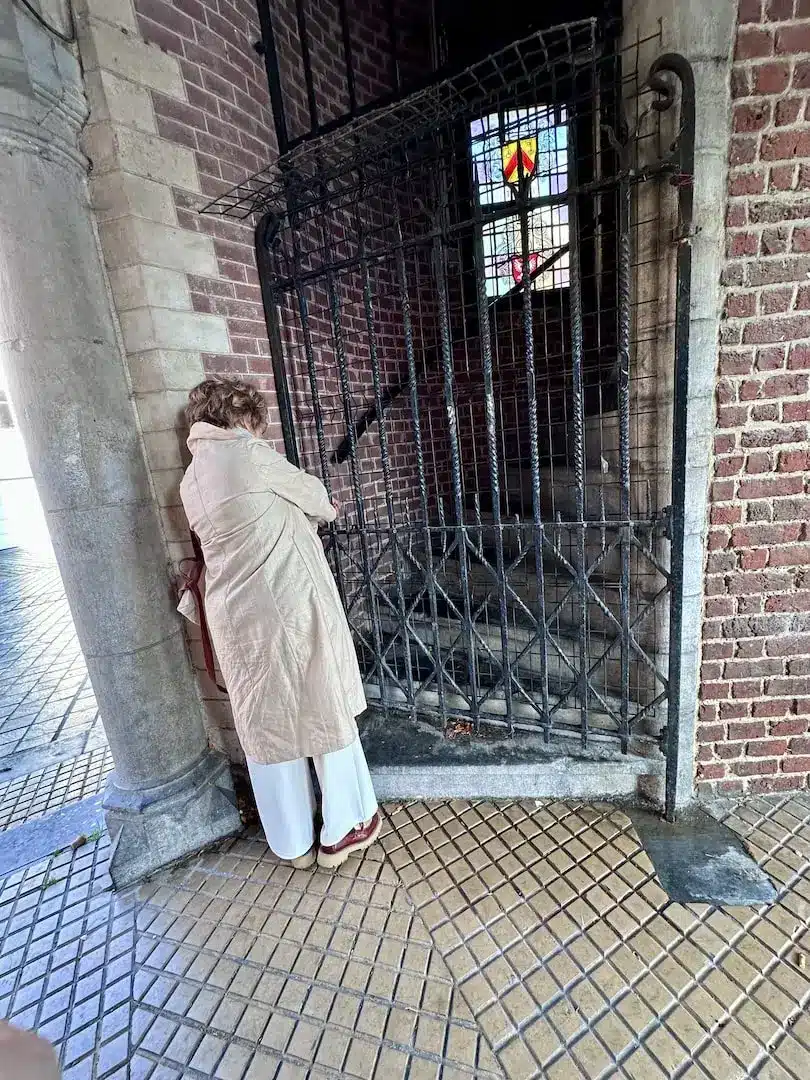
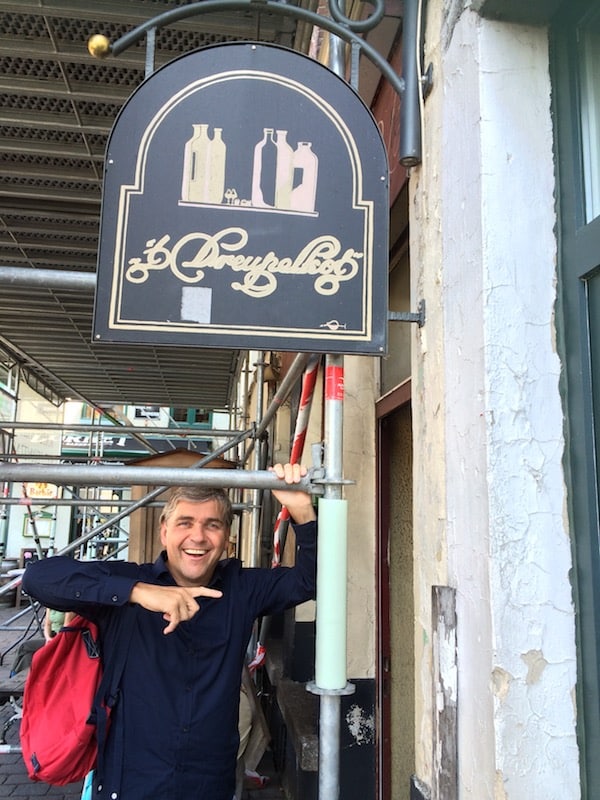
Eric Cornelissen
When it was is no longer known but during an edition of the Ghent Festivities, an interest in the history and significance of belfries arose.
With a nod to Reinhold Messner, who was the first to climb the fourteen highest peaks in the world, someone suggested that someone should climb all the belfries in the Low Countries! Only later does it turn out that there are not fourteen, but fifty-six. Messner had it easy going that way...
